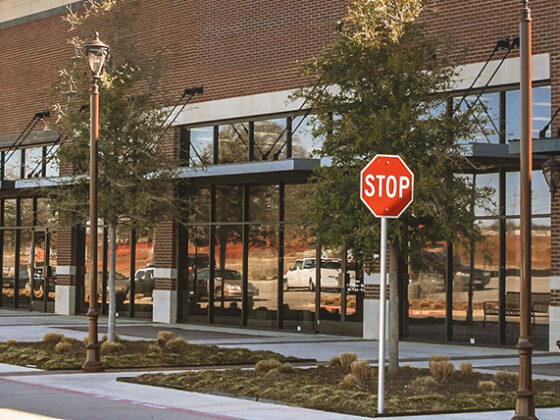DTC operations details are crucial but an often overlooked part of creating a great in-store experience. Seasoned retail advisor, Rachel Williamson of Running Great Stores, shares operational insights on helping DTC brands find success going from clicks to bricks.
Q: How did you get into the retail industry and why did you decide to make retail consulting your career?
Rachel: Retail was an “accidental” career. I was working my way through college, and I did what lots of other students do; I got a job in retail. I realized I was pretty good at it and I really enjoyed it. I decided to take time off before pursuing law school to see if retail was going to be my career.

I had a great role as a men’s buyer for a small company, and my career took off from there. If we fast forward over the last 30 years or so, I spent time working for iconic brands and I’m so grateful for that. They taught me lessons both on how to be an operator, and also on how to be flexible and resilient because those are, I think, characteristics that are vital to being successful in retail.
Q: Retail trends come and go, and over the past 30 years in retail, I’m sure you’ve seen quite a few. What trends are you seeing in the retail industry at the moment?
Rachel: The direct-to-consumer (DTC) customer is absolutely expanding the most right now. They are looking for guidance from people that have been working in brick and mortar because that is where they are growing.
My strategy is not a magic pill, but let’s say all things are equal: you have a great product and enough of it. You know how merchandising works. Your customer understands your message, your story, and your brand. Then we look at operations; the fundamentals of operations are always going to move you ahead from a financial point of view.
The biggest reason why businesses aren’t working or running the way they should be and having the output that they should have is that there’s such a lack of clarity.
Q: How do you help retailers on the store side gain the clarity necessary to be successful?
Rachel: We start by understanding the desired store experience and work back from there to clarify roles and responsibilities. We help them define what success looks like for each role. That is how we tackle it from the store side, but we often also need to look at the business operations side. We help them to be more strategic and prioritize. How a store operates and how the business operates are umbilically connected.
Q: When working with a DTC brand, how early in the process do you engage with them? What does the process entail?
Rachel: Typically, by the time I get brought in, the DTC brand is working with someone like Asset Strategies Group (ASG) to help them find the right physical space. As the location decisions are made, I begin to help them think through the customer journey and the experience that their stores will deliver. This is the starting point. The experience online is very different than the experience in brick and mortar. We help them think through this creatively, then it becomes more tactical. DTC brands know their product and their consumers love them. They have a great online customer experience, but they admit they feel overwhelmed about running great stores. We can help them address every aspect of running a store through our Retail Playbook™. Once retailers see this tool, their mind is eased.

Q: What do stores need to do after opening day to ensure operational excellence?
Rachel: Once the store has been opened, we train the team on what running a great store looks like. We implement the Retail Playbook™ with the store teams. The Retail Playbook™ answers questions like, how do I hire talent? How do I onboard them? How do I develop them? How do I deliver effective one-on-ones? What is my review process? What happens if somebody isn’t performing? It’s everything around the people pieces but also goes deep into how to engage the customer and KPIs to focus on as levers to pull to impact sales results. It is about helping teams understand the behaviors that deliver results.
The final piece of the Playbook is around operational excellence. This includes the operational components for keeping the store filled in, managing inventory levels, loss prevention, health and safety, and more. So every single process you can imagine for running their specific brand is now all in one place, in the customized digital Retail Playbook™.
For DTCs, their sense of relief when we get to this point is incredible. It is perfect for helping a generation of digital natives learn how to operate in brick and mortar. We are seeing amazing success with this formula.
Q: So, is the benefit of the Retail Playbook™ for DTC retailers that it includes a lot of things they just haven’t thought about?
Rachel: Yes. An example is inventory management. Sure, they’ve got a way that inventory is managed on their e-commerce site, but they haven’t thought about whether the same system can manage brick-and-mortar sales. They often haven’t thought about injuries and incident reports. How do we recycle here, and what does the city require? They don’t know what they need to be worried about and what they do not need to worry about.
The Retail Playbook™ also helps retailers understand the fundamentals of running great stores so they can operate consistently across locations.
Whether you started as an e-commerce business or as a brick-and-mortar store, the fundamentals are the same. Once they understand the fundamentals of running a store, they must execute consistently.
The problem is that fundamentals are not sexy, right? It’s boring to do the same thing over and over. As humans, we like to invent; we like to create. And some people are just wired that way. They don’t want to execute something that’s already been figured out for them. They want to tweak it and create a new way of doing it.
When this happens, the brand standards can be desecrated as the brand becomes defined by the manager who runs that specific location. If you have 50 locations with 50 managers doing it 50 different ways, you no longer have a brand. What you have is a bunch of stores that all run differently. A true brand wants consistency from location to location. Imagine how you would feel if you went into Mcdonald’s and your fries tasted differently than you were expecting. It isn’t a good brand experience. Those fundamentals are really where the excellence lies.
Q: In some ways, DTCs have a lot to learn about selling in a physical space, but are there advantages you see for DTCs moving to brick and mortar?
Rachel: The biggest advantages are that they have a product, they know what their customers want, and they have data to prove it. I could open a store tomorrow, but I don’t have a product to sell. I’ve got all the knowledge to run a great store, but I have no product. Am I going to be successful? Of course not. Likewise, you can have an e-commerce site today and the product is great. You’ve got a steady flow of inventory and everything you need to be confident in what you’re selling now. You’re moving into brick and mortar and don’t know the first thing. But is that something you can learn? Yes, easily.
It makes so much sense for direct-to-consumer businesses to move into the brick space because they already have the most important things–a great product and a business plan. Everything else is easy, and we can help them get that figured out. But if you don’t have the product, we can’t even have this conversation.
Path to In-Person: A DTC Guide for Physical Retail
Q: You seem to love working with DTC brands. Why is that?
Rachel: The really cool thing about working with digitally native brands is they’re not saddled with “the way it’s always been done.” That thinking gets in the way of many companies and limits them unnecessarily. And even experienced retail managers say, “we can’t do it that way,” whereas DTCs have no baggage. They say, “let’s try it.” I think it has helped DTCs move into the brick-and-mortar space and be successful so much more easily than other retailers.
The other thing about direct-to-consumer brands is that they’re good at using design thinking as it relates to the customer. They are quite open about the customer and their challenges. They can evaluate how their business addresses those challenges and how they make the customer experience the center of everything they do. They have a more innate sense of how to use empathy to understand their customer’s pain points. I find that a very open way of thinking is beneficial to the DTC customer, and it makes the transition into brick and mortar super easy.
Q: What do you say to the people who proclaimed retail was dead during the height of COVID?
Rachel: While we were going through COVID, the media narrative was that brick and mortar was dead. I don’t have a crystal ball, but I have been in retail a long time, and the truth is, It’s never going to die. Sure, there are things we choose to have delivered to our doorstep, commodity items. But nothing replaces the fun of going out and having an experience and visiting retail locations and meeting and falling in love with brands.




